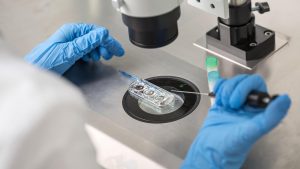Uterine fibroids are common smooth muscle tumours found in women of reproductive age. Over 75% of women will develop fibroids prior to menopause. They have been traditionally being thought to only have adverse effects on pregnancy if the fibroids thin the endometrium and distort the uterine cavity.
A recent retrospective study in the Journal of Fertility and Sterility looked at the effect of type 3 (at least 2 cm in size) intramural fibroids on IVF success that occurred within proximity to the endometrium but do not distort the uterine cavity. Their proximity may have more of an impact than previously believed.
The retrospective study found that patients with type 3 fibroids in close proximity to the endometrial cavity had a significantly lower frequency of implantation, biochemical pregnancy, clinical pregnancy and live birth rates. In fact, the patients with type 3 uterine fibroids had a reduced live birth rate of more than 50%, which suggests a significant impact in IVF pregnancies.
The fibroids appeared to affect the endometrium, the lining of the uterus, by interruptions in molecular signalling rather than physical and mechanical disruption. These fibroids can also alter anticoagulant expression in the endometrium resulting in heavier menstrual bleeding. A good proxy for the effect on endometrial receptivity is heavier menstrual bleeding so a fibroid that affects bleeding probably also adversely affects endometrial receptivity.
Therefore, the study recommends that large intramural fibroids in close proximity to the endometrial cavity warrant removal prior to IVF treatment, especially if associated with increased menstrual bleeding.






